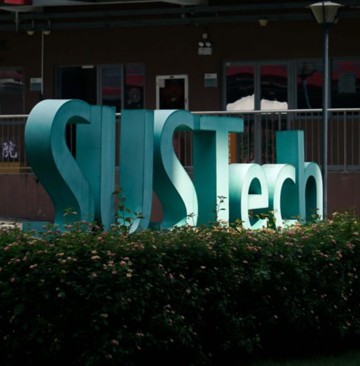New Advances on Integrated Heat Recovery and Material Recycling from High Temperature Slags by Prof. Zuotai Zhang
2016-11-07
Generally, the heat recovery from high temperature slags represents one of the most important potentials of energy saving and emission in the metallurgical industry. With respect to this, recently the research team led by Professor Zuotai Zhang of the School of Environmental Science and Engineering of SUSTech, make a series of advances on the heat recovery and material recycling from high temperature slags, especially the thermodynamics of integration of biomass gasification and slag heat recovery.
It is estimated that around 200 Mt blast furnace slags and 70 Mt steel slags were produced in the metallurgical industry in China. With the high temperatures to 1650 oC, the thermal energy in these slags was equivalent to the combustion heat of 20 Mt standard coals. However, the recovery rate of the thermal heat was around 2%, which even accounted for a global challenge. The key factor for this was the control of the mineral phase transformation during the cooling process and the conversion of the energy type.
Prof. Zuotai Zhang have carried out lots of work about effective heat recovery and integrated material recycling from hot slags. Using the chemical methods to extract the waste heat is the new research highlight these days, which shows the advantages of production of high-value syngas and integration of various sectors. From the viewpoint of heat recovery, the hot slags could act as the heat source for biomass or sludge gasification, which could first decrease the material combustion and thus reduce the carbon emission. On the other hand, the presence of hot slags could result in the change of the syngas yields, which were systemically studied here based on the thermodynamic calculations. It was first found that when the gasifying agent was steam, the blast furnace slags showed a remarkable effect on releases of polluted gas (Int J Hydro Energy 2016,41). While in the agent of CO2, the steel slags showed a more remarkable influence on the syngas yields and polluted gas releases and thus the optimistic gasification conditions should be accordingly adjusted (Energy 2016,114). In order to further clarify the effect of steel slags, the role of the chemical compositions of the steel slags, mainly represented as basicity (mass ratio of CaO to SiO2) and iron oxide content, on the gasification results were investigated. Based on this, an integrated modern model of multiple sectors was proposed including metallurgical industry, chemical engineering industry and agricultural sector, which could provide significant guidance toward energy recovery, material recycling in the metallurgical industry and disposal of biomass in the agricultural sector.
The first author of these publications is Yongqi Sun, PhD candidate of Prof. Zuotai Zhang and Prof. Zuotai Zhang is the corresponding author. Prof. S. Seetharaman from the Royal Institute of Technology also participated in these researches, which were also supported by the National Natural Science Foundation and National Science Fund for Excellent Young Scholars of China.

Figure 1. An integrated modern model of multiple sectors based on combination of biomass gasification and slag heat recovery
